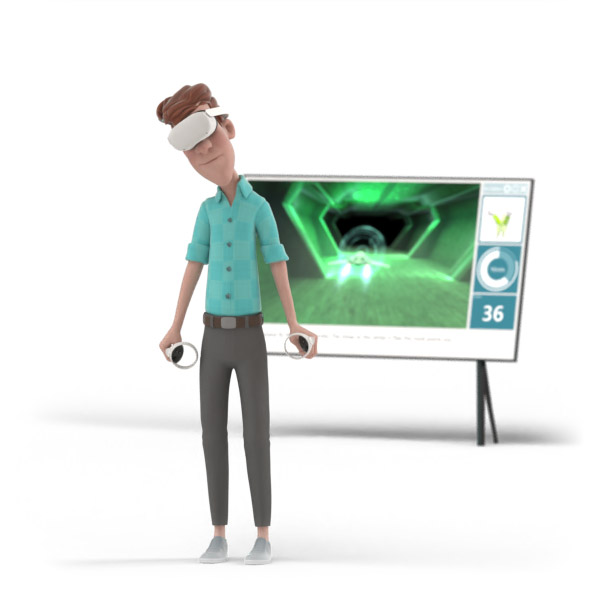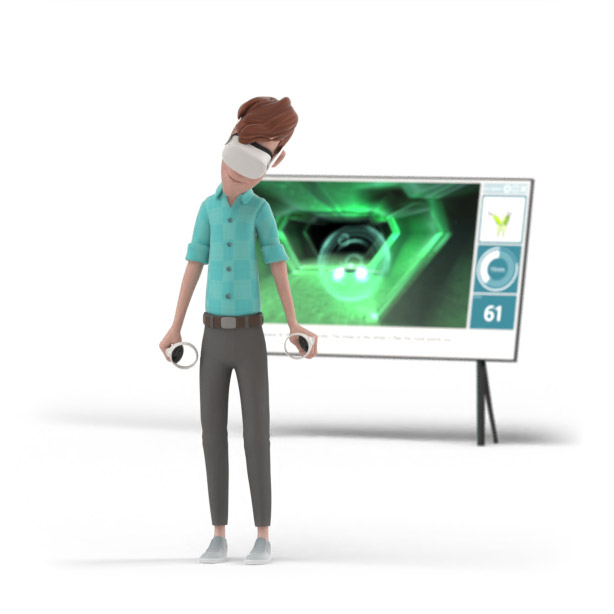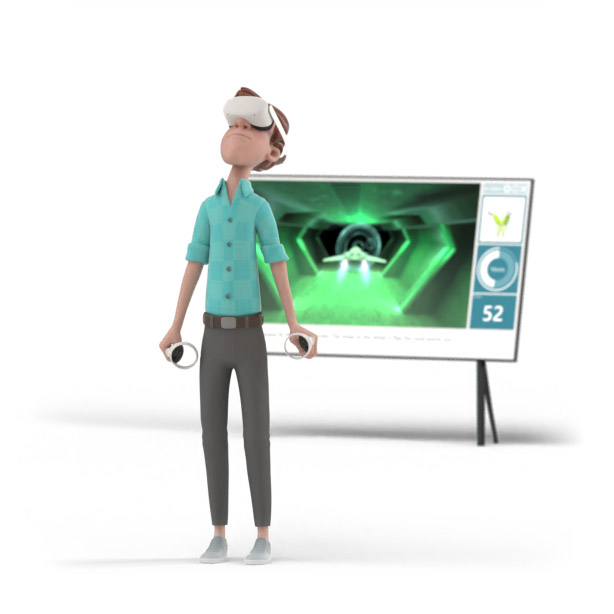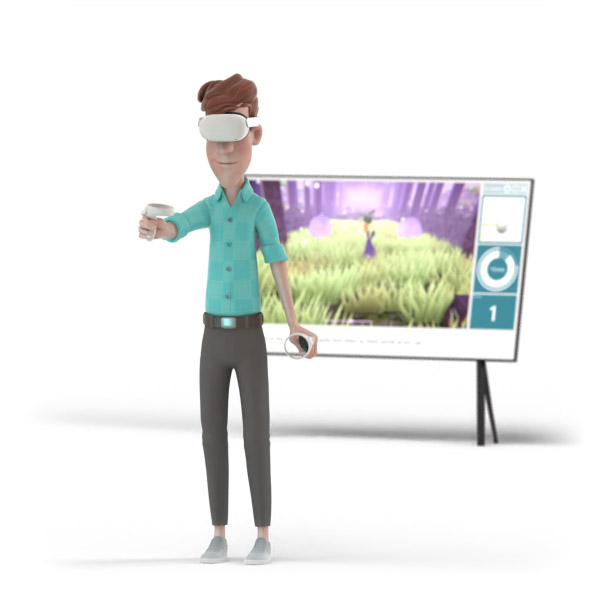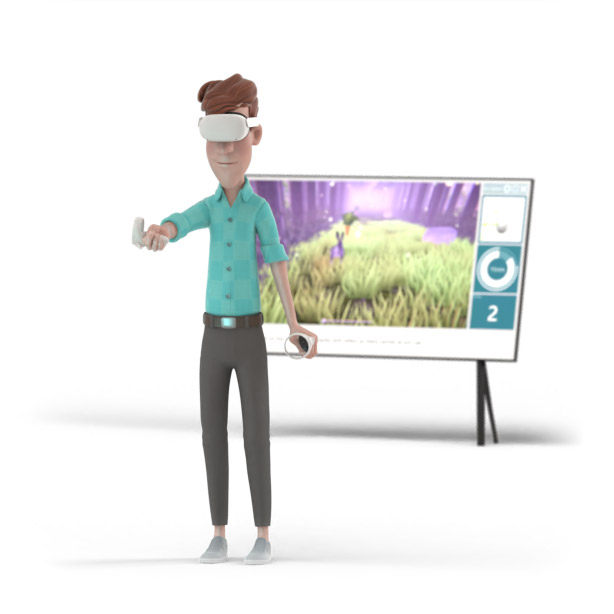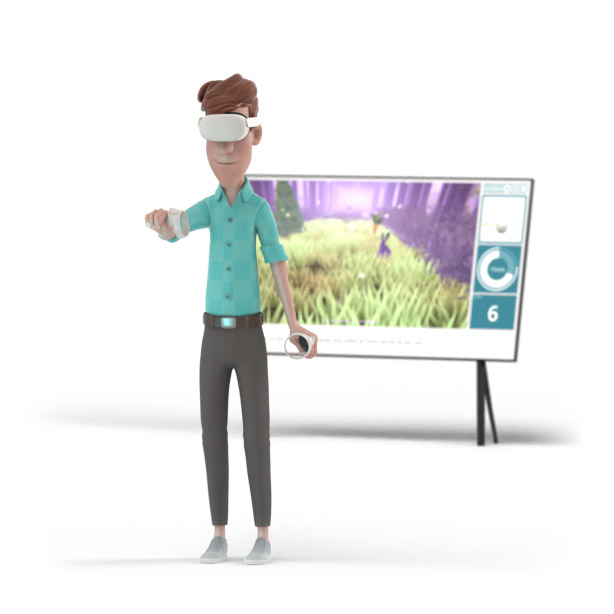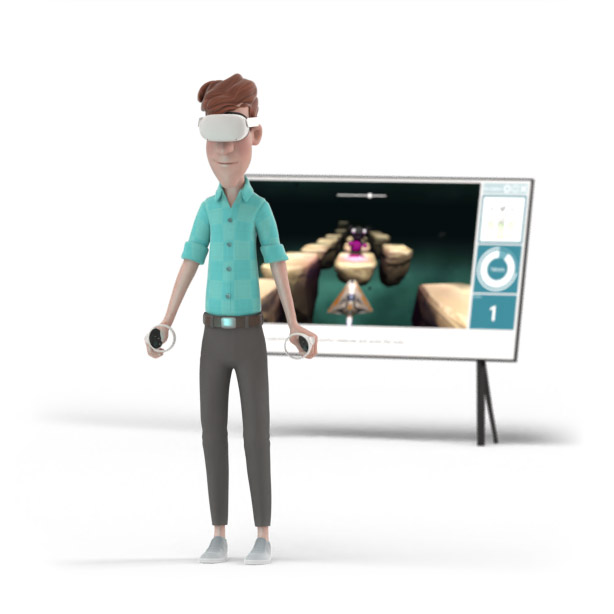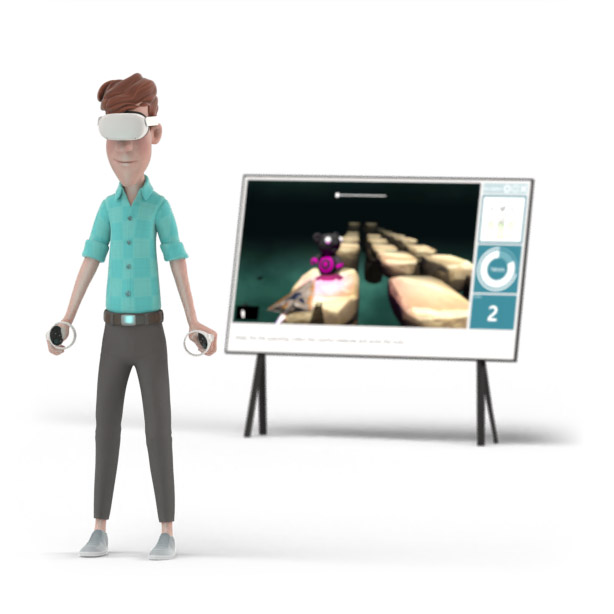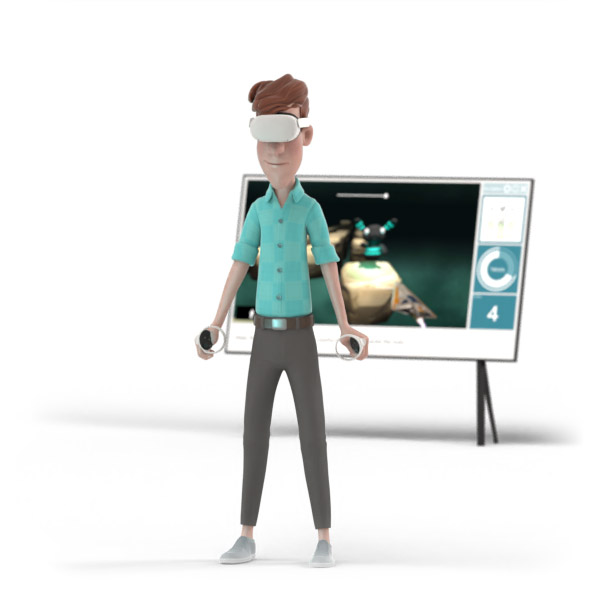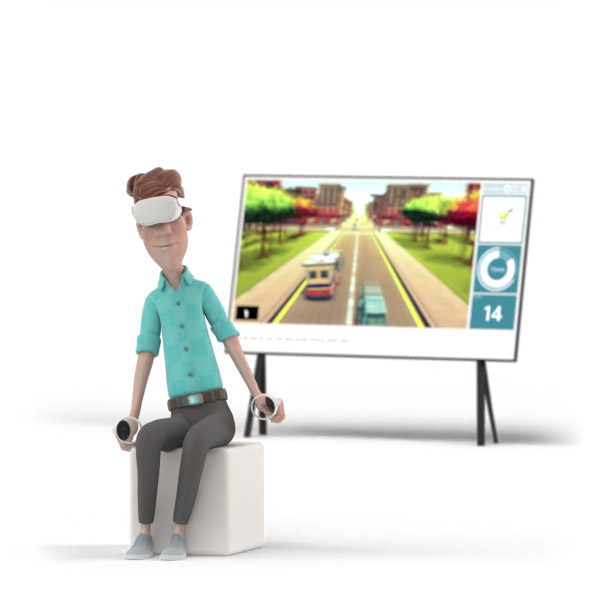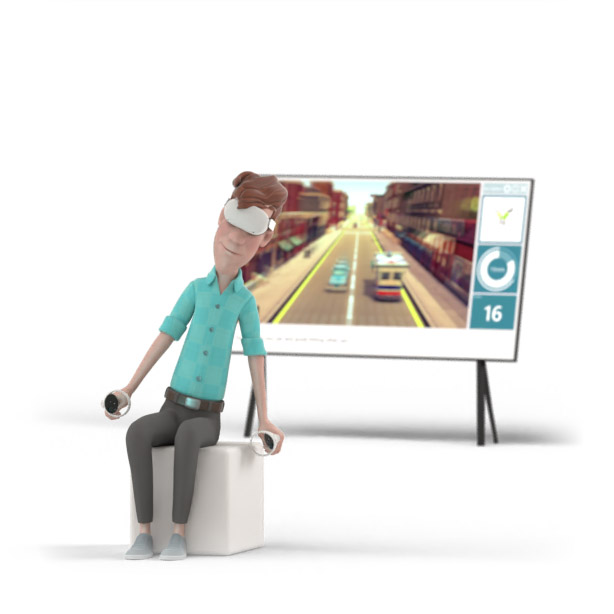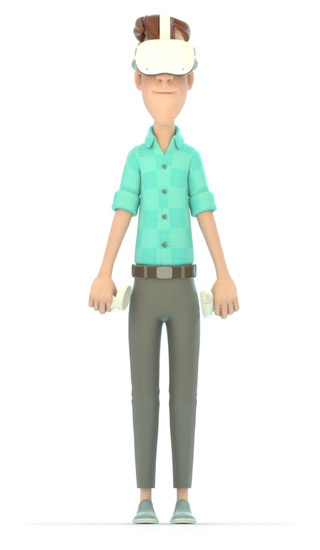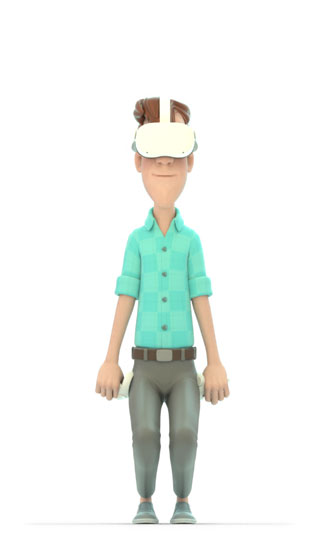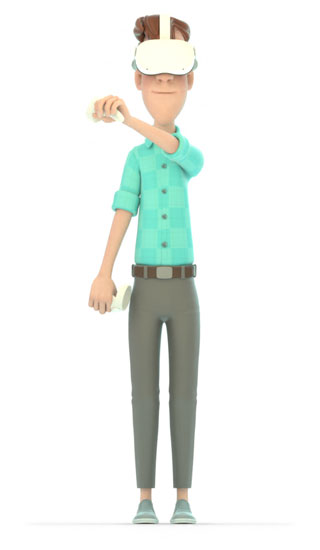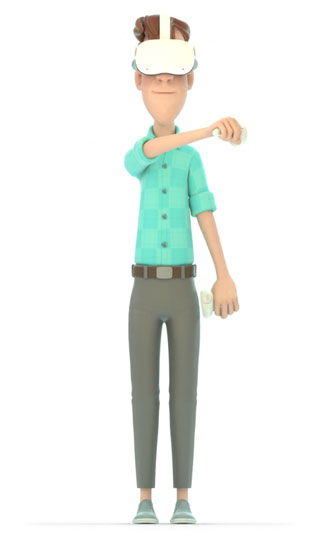VAST.Rehab post
How to Use Meta Quest 2 with VAST.Rehab?
Virtual reality (VR) technology has been rapidly advancing and is now being utilized in various fields, including healthcare. In particular, VR headset rehabilitation has become an increasingly popular approach for providing therapy to patients. VAST.Rehab is an innovative platform that leverages the power of VR technology to help patients recover from various injuries and medical conditions. Here's a guide on how to use Meta Quest 2 with VAST.Rehab.
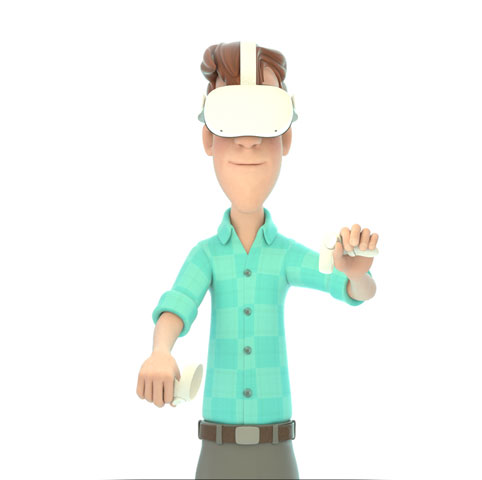
Which gamified tasks and evaluations are available on VR patient station?
Using a VR headset for therapy sessions in VAST.Rehab can be a great way to engage patients in their rehabilitation process. With over 20 gamified tasks and over 30 different Control Modes to choose from, therapists have a wide variety of options for building custom therapy sessions. The gamified tasks are divided into categories like range of motion, balance, functional movements, movement precision, movement times, divided attentions, problem solving, and memory. These categories allow therapists to tailor the sessions to the specific needs of each patient. By using a VR headset, patients can be transported to immersive and interactive virtual environments that make therapy more engaging and enjoyable.
Sample Control Mode: 2D head bending
The 2D head bending control mode is a movement pattern that can be used in VAST.Rehab for patients who have limited range of motion or difficulty moving in 3D space. In this mode, the patient can control the movement of objects on the screen by tilting their head up, down, left, or right. The range of motion required to reach the targets can be parametrized by the therapist to adjust the difficulty level and ensure the patient is challenged appropriately. This mode can be helpful in improving neck mobility, eye-hand coordination, and overall spatial awareness. This Control Mode is just one of over 30 available in VAST.Rehab, each with their own unique benefits and applications.
Sample Control Mode: Wrist rotation
The wrist rotation control mode is a movement pattern available in VAST.Rehab that allows patients to exercise their wrist by rotating it to reach the designated targets. This mode is particularly useful for patients recovering from injuries or surgeries related to the wrist. The degree of rotation required to reach the targets can be parametrized, allowing therapists to adjust the range of motion required for each patient's specific needs. This ensures that patients are not overexerting themselves and are progressing towards their rehabilitation goals safely and effectively. This Control Mode is just one of over 30 available in VAST.Rehab, each with their own unique benefits and applications.
Sample Control Mode: Walking left and right
The walking left and right control mode is a movement pattern available in VAST.Rehab that simulates the act of walking by moving left and right. This control mode can be parametrized to adjust the required range of motion for the patient to reach the targets. It is particularly useful for patients who are working on regaining their walking abilities and can be customized to suit the specific needs of each patient. This is just one example of the over 30 Control Modes available in the system.
Sample Control Mode: Trunk bending in seated position
The trunk bending control mode is designed to help patients improve their core strength by performing exercises that involve bending to the left and to the right while sitting. This movement pattern can be parametrized to control the required range of motion needed to reach the targets. By adjusting the parameters, therapists can customize the exercise to the patient's needs and help them progress towards their rehabilitation goals. This control mode is particularly useful for patients with back injuries or conditions that affect their core strength. This Control Mode is just one of over 30 available in VAST.Rehab, each with their own unique benefits and applications.
Squats Control Mode
The Squats Control Mode is just one of over 30 different Control Modes available in VAST.Rehab VR Patient Station, each designed to target specific areas of the body and improve different aspects of physical health. When using the Squats Control Mode, patients will perform squats while immersed in a virtual reality environment. The mode includes a variety of settings that can be customized by the therapist to fit the patient's needs and fitness level.
Punching while crossing the body midline Control Mode
One of the sample Control Modes available in VAST.Rehab VR therapy sessions is punching while crossing the body midline. This task is designed to improve the patient's coordination, balance, and upper body strength. The patient wears a VR headset and is presented with a virtual environment in which targets appear on either side of their body. The patient is instructed to punch the targets, crossing their arms over their midline to reach the targets on the opposite side. This encourages the patient to use both sides of their body equally, promoting better coordination and balance. The task can be customized based on the patient's abilities and can be adjusted in difficulty level to ensure a tailored experience for each patient.
Interested in detailed description of which gamified tasks and evaluations are available for VR patient stations? Please download the brochure below.
VAST.Rehab offers an extensive range of gamified tasks that can be customized to meet the unique needs of each patient. These tasks can be controlled using a variety of control modes, allowing therapists to select the most appropriate one for their patient's rehabilitation goals. Additionally, the system collects various metrics during each task to track patient progress over time. To learn more about the available tasks, control modes, parameters, and metrics that VAST.Rehab offers, please download our brochures below.
Is VR Patient Station compatible with VAST.Rehab Therapist Panel?
VR Patient Station can be used with the Therapist Panel in the same way as all other patient stations.
Using the Therapist Panel with the VR Patient Station allows therapists to monitor the progress of their patients and adjust the therapy parameters in real-time, providing a personalized experience that meets the individual needs of each patient. The live preview of the patient's results allows therapists to analyze the data in real-time, making necessary adjustments on the spot. This level of customization allows for a more targeted approach to rehabilitation and ensures that patients are getting the most out of their therapy sessions.
By using the VR Patient Station with the Therapist Panel, patients can enjoy the benefits of virtual reality rehabilitation while receiving guidance and support from their therapist. If you're interested in learning more about how the Therapist Panel can be used with the VR Patient Station, a detailed description can be found at how therapists use Therapist Panel.
Key benefits of VR Headset Rehabilitation
VR headset rehabilitation is an approach that involves the use of virtual reality headsets to provide therapeutic interventions. The technology immerses the patient in a virtual environment that is designed to stimulate physical and cognitive responses. The goal is to create an engaging and interactive experience that encourages patients to participate in the therapy sessions and achieve their goals.
High Accuracy of Measurements
One of the advantages of using VAST.Rehab with VR headset is the high accuracy of measurements. The system uses a variety of sensors and advanced algorithms to track patient movements and provide real-time feedback. The precise measurements help to track progress and ensure that patients are making the necessary improvements.
Working on Relatively Small Spaces
Another benefit of using VR headset rehabilitation is that it can work on relatively small spaces. Unlike traditional therapy approaches that may require large pieces of equipment, VR headsets only require enough space for the patient to move around comfortably. This makes it an ideal option for patients who may have limited space or those who prefer to receive therapy at home.
Beneficial for Patients Who Need to Be Cut Out of External Distractors
Patients who struggle with external distractors can benefit greatly from VR headset rehabilitation. The virtual environment allows the patient to focus solely on the therapy tasks, without being distracted by the surrounding environment. This is especially beneficial for patients who may have sensory issues or who may be easily distracted.
Top concerns of using VR
Using VR technology in rehabilitation can offer many benefits, but there are also some concerns to consider. Two of the top concerns are motion sickness and hygiene when patients are using the headset one after another.
Motion Sickness
Motion sickness is a common problem for some people who use VR technology, but VAST.Rehab has taken this into account. VAST.Rehab's gamified tasks for VR are optimized to exclude quick camera movements, and the patient is always static in the virtual world. This means that the patient's viewpoint is stable, and there are no sudden movements that can trigger motion sickness. Most VAST.Rehab gamified tasks take place in a virtual room with a big screen in front of the patient. This allows for a comfortable experience for patients, even those who are susceptible to motion sickness.
Hygiene
Another concern about using VR in rehabilitation is hygiene. When patients are using the VR headset one after another, there is a risk of transmitting germs and bacteria between patients. To deal with hygiene concerns, it is important to clean the VR headset and controllers thoroughly between uses. Alcohol wipes or cleaning solutions specifically designed for VR equipment can be used to disinfect the headset and controllers. It's also important to encourage patients to use a disposable or washable face mask or a VR cover that can be sanitized between uses.
Conclusion
In conclusion, VR headset rehabilitation with VAST.Rehab offers numerous benefits for patients looking to recover from injuries or medical conditions. It offers high accuracy of measurements, can work on relatively small spaces, and is beneficial for patients who need to be cut out of external distractors. With the help of Meta Quest 2 and VAST.Rehab, patients can receive immersive and engaging therapy that can help them reach their goals.


